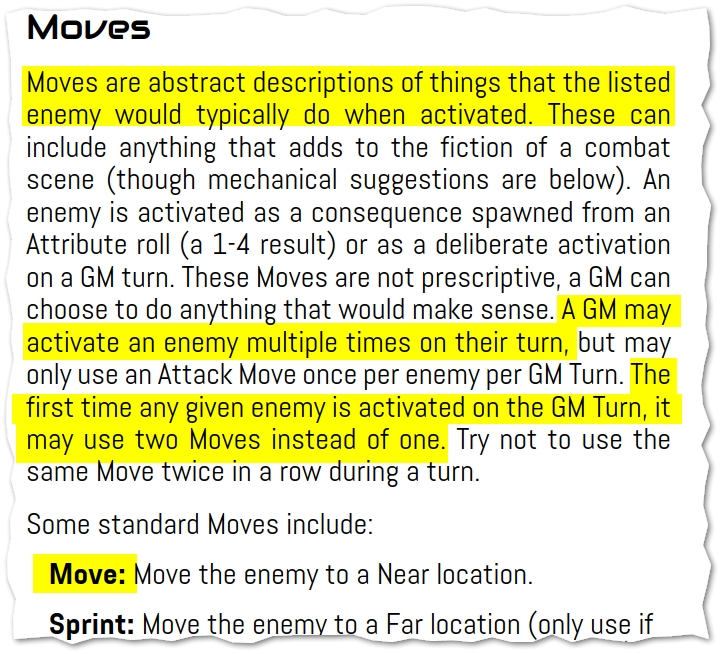Hi Binary! (can't easily find your name, mr. Author 😉)
I'm reading the book, and I think I have issues with the "Move" term, and a particular paragraph:

So, we have "moves" that are "GM actions" (and, from what I understand, they are almost interchangeable with "GM enemy activations"). Then, the word Move is used also for the Move Move (!), that here I will call "Relocate", so there's no confusion about it (and, of course I humbly suggest you to find another term for the move-activation and/or for the move-move).
Said so, I read that I can activate a single enemy multiple times in my GM turn (and, of course, also as "reactive moves" from a Ace consequence). So, why to put the last part of the paragraph "The first time any given enemy is activated on the GM Ture, it may use two Moves instead of one"? I mean, if I want to make my enemy to do a couple of things in a single GM round, I could simply activate it two times (I can virtually do it infinite times). If, instead, you were meaning that with a single Move I can do 2x Relocate move, then of course it's a different thing, and in this latter case it's unclear from the paragraph.
So, in short: use different terms could be useful, AND, if I can activate infinite time an enemy, then it's redundant to specify I can do two moves with the first single one activation.
Thanks for the attention, and the eventual clarification. PS: I think you did a cool, pretty light, mecha-game; I love the exact amount of crunchiness you put in, and the usage of the tags. I hope it will stay fast at the table, I'd love to test it with my friends sooner or later.
Andrea

